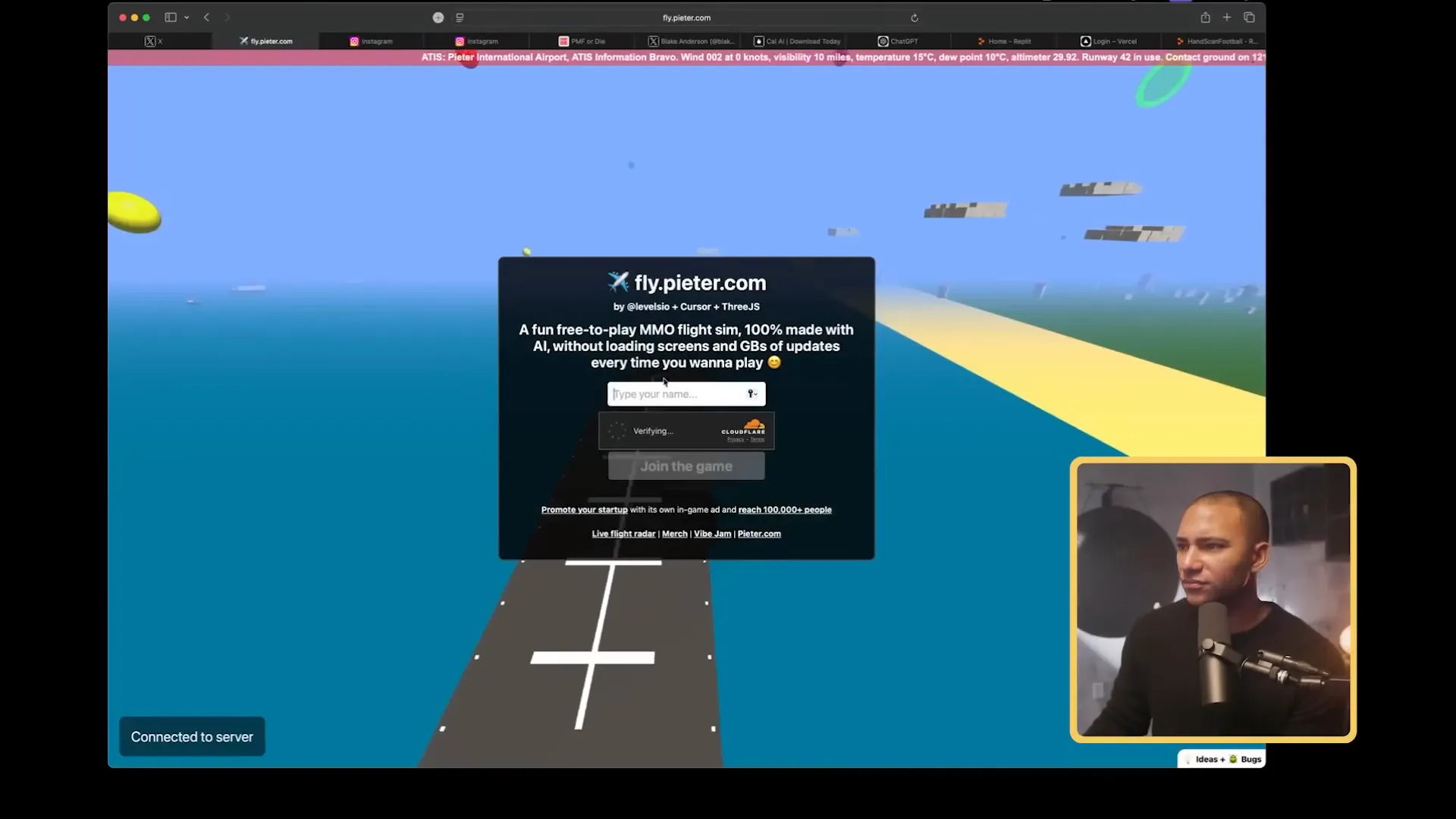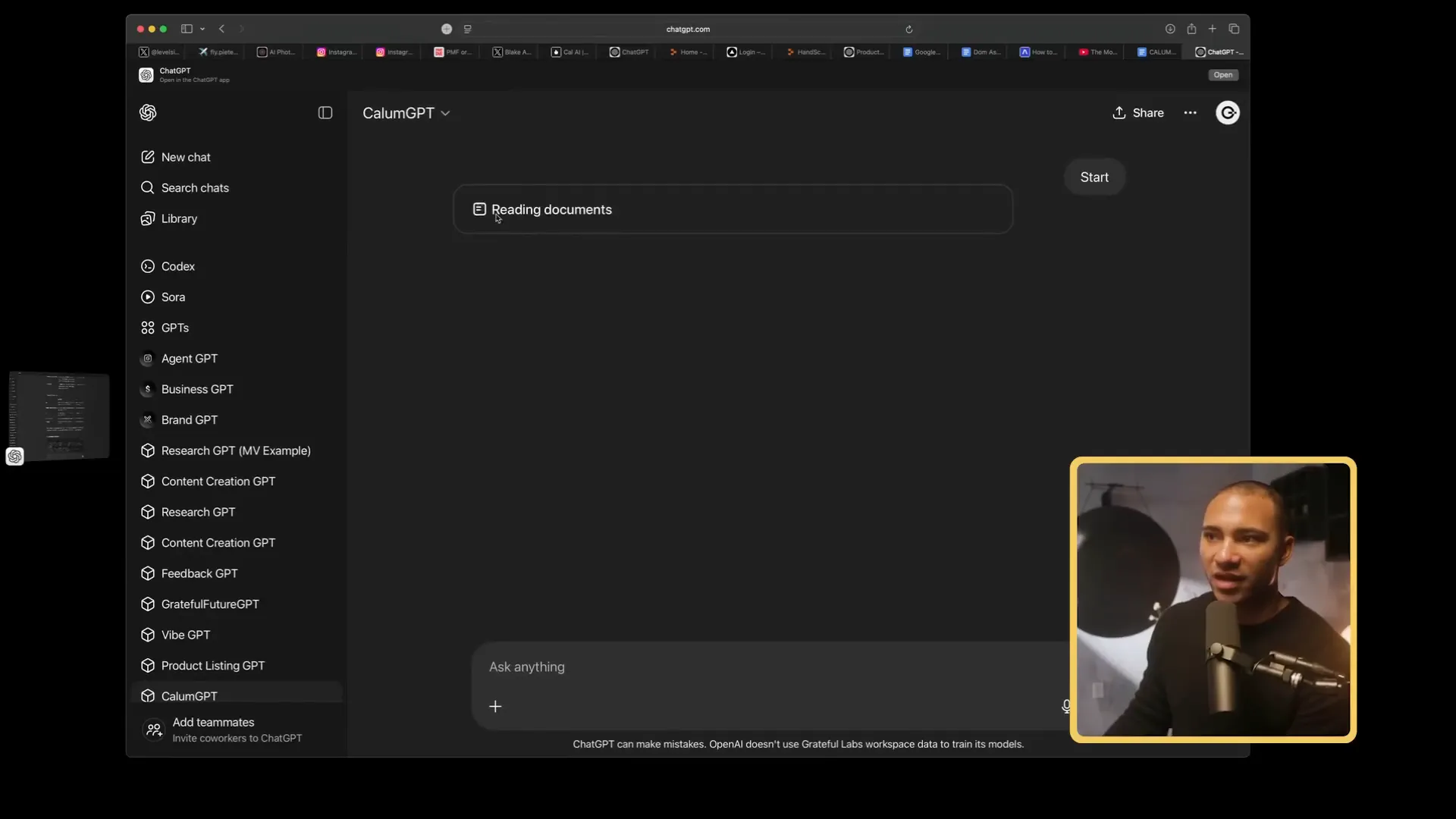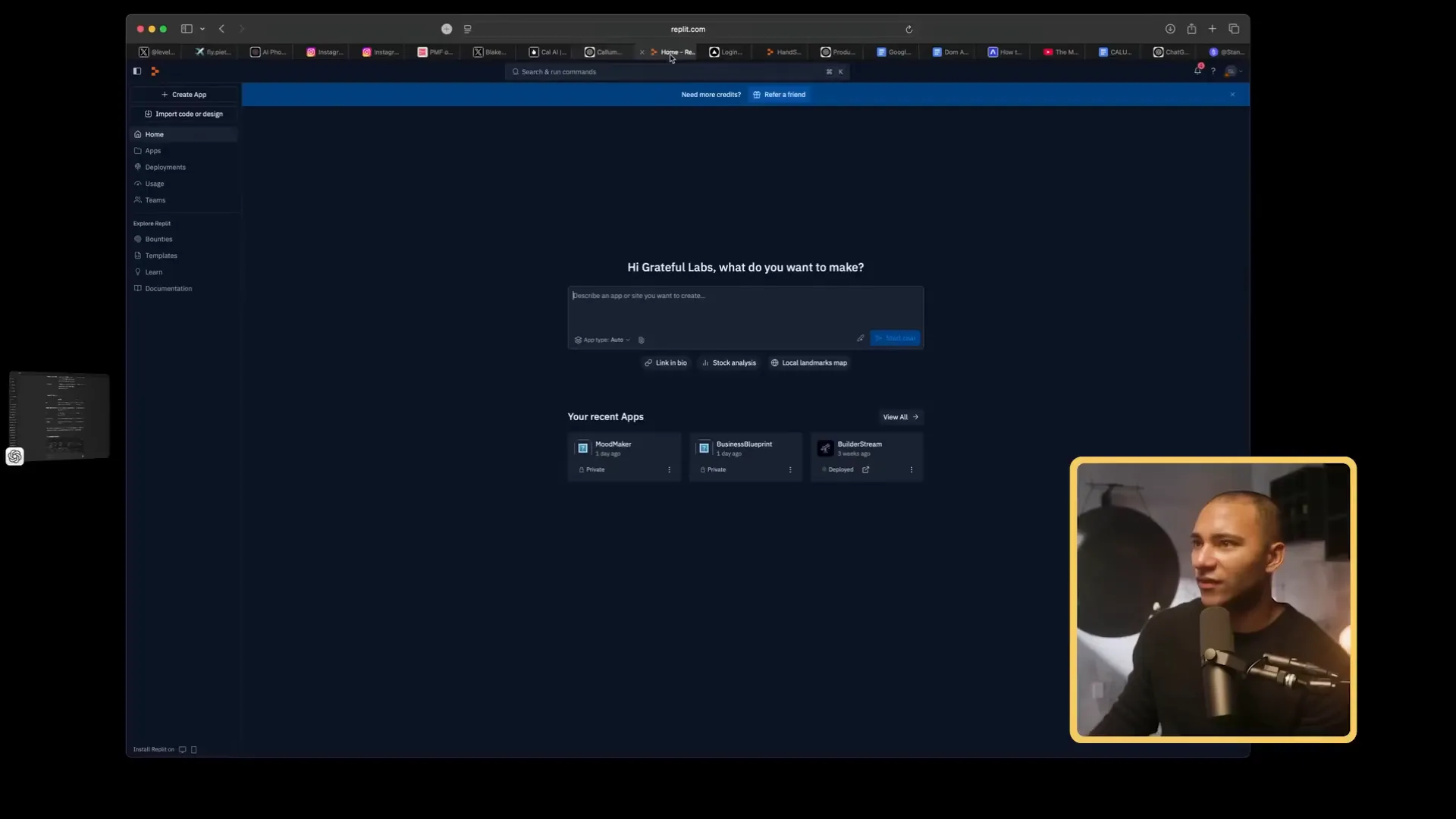Solopreneur: The FASTEST Way To Start An AI Business With Zero Employees (Using ChatGPT & Replit)
Imagine a world where a company can be entirely run by artificial intelligence—where ideas are generated based on real-time market movements, executed instantaneously, branded, marketed, and delivered without human employees. This vision is no longer a distant fantasy but a rapidly approaching reality, thanks to the convergence of mindfulness, AI, and social media. When these forces are harnessed together thoughtfully, they empower individuals to cultivate character, self-reliance, and success in the age of AI.
In this comprehensive guide, inspired by the insights of AI educator Dom Ashburn (also known as Mr. Grateful), we’ll explore a practical, human-first framework for building your dream AI business quickly and efficiently. Whether you have no coding experience, technical background, or employees, this article will walk you through the three-step process to launch an AI-powered solopreneur venture using tools like ChatGPT and Replit.
Table of Contents
- Introduction: The Moment AI Became Real
- Why Everyone Needs a “Button” in the Digital Age
- The New Era of Entrepreneurship: Money Flows Differently
- How AI Impacts the Everyday Person
- Understanding AI Agents and Their Role in Business
- Real-World Examples: AI-Powered Products and Founder-Led Brands
- The Three-Step Framework for Building Your AI Business
- Brain Dumping with AI: Turning Your Thoughts into Actionable Ideas
- Building Your AI-Powered Business Companion
- Choosing the Right AI Tools: Replit, V0, Roark, and More
- The “Lean Forward” Rule: Taking Immediate Action
- Final Challenge: Your First Step Starts Now
- Frequently Asked Questions
- Conclusion: Embrace the AI Solopreneur Revolution
Introduction: The Moment AI Became Real
About a year ago, during a networking event in New York City, I met Dom Ashburn. He showed me how he was using custom GPTs to build and manage his business, opening my eyes to AI's true capabilities. Since then, Dom moved to San Francisco to be at the heart of AI innovation and developed a framework that anyone can use to build an AI-native company from scratch.
This article distills the essence of that conversation and framework, providing a clear, actionable roadmap for entrepreneurs looking to leverage AI in their businesses today.
Why Everyone Needs a “Button” in the Digital Age
Dom’s foundational belief is simple but profound: everyone needs a “button.” This button is your digital gateway—a place on the internet where people can engage with you directly, purchase your products or services, book your time, or give you their contact information. It’s the essential mechanism enabling self-reliance in today’s digital economy.
This button might be a website, a social media storefront, or any online platform where value exchange happens seamlessly. By combining this with mindfulness and AI, you can create a resilient system that not only reflects your character but also empowers you to thrive in uncertain times.

The New Era of Entrepreneurship: Money Flows Differently
One of Dom’s big bets is on entrepreneurship itself. He believes we are witnessing a fundamental shift in how money flows to entrepreneurs—now more direct and democratic than ever before. No longer do you need family wealth, a college degree, or technical skills to build and monetize a product or service.
By sharing your story and solving problems you’ve personally encountered, you naturally connect with people who share those challenges and are willing to pay for your solutions. This doesn’t mean you must build the next billion-dollar AI unicorn. Simple products like t-shirts, candles, or even custom cups still have value and can be sold effectively with the right approach.
What’s changed is the framework—AI and social media have lowered the barriers to entry, enabling anyone to create, market, and sell directly to a global audience.

Direct Connections Replace Middlemen
In the past, the path from creator to customer was often tangled with layers of middlemen, taxes, and corporate structures. Today, social media and AI allow a more direct connection from consumer to creator, bypassing many traditional gatekeepers. This directness is a superpower in a world where the future feels uncertain.
How AI Impacts the Everyday Person
Many people hear about AI advancements but feel disconnected, thinking these changes only affect Silicon Valley executives or tech insiders. Dom addresses this head-on: AI is already changing daily life and business for the average person in tangible ways.
On his iPhone, Dom uses multiple AI tools—ChatGPT, Google Gemini, Meta AI, Perplexity, Grok, Claude, and others. These AIs serve as instant knowledge bases, research assistants, and creative partners. For example, if Dom has an idea, he immediately validates it, researches the market, or solves random questions throughout the day.
AI helps expand his vocabulary, troubleshoot technical issues, and even provide first aid advice. This iterative, conversational use of AI accelerates learning and creation far beyond traditional methods.

From Idea to Creation at Lightning Speed
AI is not just a passive tool for information—it’s an active creator. Dom can build products, websites, software, ad campaigns, and newsletters using AI, iterating and refining rapidly. Meanwhile, others might spend days or weeks manually researching or coding.
This speed and accessibility mean that anyone consistently leveraging AI daily can dramatically increase their productivity and creative output.
Understanding AI Agents and Their Role in Business
AI comes in many forms, and understanding the distinction between basic AI, reasoning models, and AI agents is critical.
- Basic AI (e.g., ChatGPT 4.0): Think of this as a very smart person locked in a room who can answer questions based on what they know but cannot access new information or act beyond conversation. They want to please you but might confidently give wrong answers.
- Reasoning Models (e.g., ChatGPT 3.0): This AI has tools like a whiteboard and computer, allowing it to plan, research, and reason through problems step-by-step, producing more accurate and structured answers.
- AI Agents: These are AI models that not only plan and reason but execute tasks autonomously across multiple apps and websites. They can click buttons, fill forms, and carry out workflows just like a human would, enabling automation of complex processes.
The Future: AI-Run Companies Without Employees
Dom reveals that the ultimate mission of many AI companies today is to create fully autonomous AI-run organizations. Imagine a company that generates ideas, brands products, markets them, sells them, and delivers—all without human employees. This vision is approaching reality through incremental advances in AI agents and automation tools.
Though not common yet, this future where AI handles entire businesses is already being prototyped in segments. Entrepreneurs can already deploy AI agents to automate many business tasks, reducing or even eliminating the need for employees.
Real-World Examples: AI-Powered Products and Founder-Led Brands
Dom shares inspiring examples of individuals building AI-powered products quickly and monetizing them in innovative ways.
Peter Levels’ Viral Flight Simulator
Peter Levels created a flight simulator video game using AI “vibe coding,” where he simply described his vision and let AI build the product. The game includes advertising space sold to brands like Atlantic Records, generating five-figure monthly revenue—all without traditional programming.

Blake Anderson’s Cal AI
Another example is Blake Anderson’s Cal AI, which uses AI to analyze pictures of food and provide calorie and macronutrient information. This app, likely built with AI coding tools, addresses a real user pain point and demonstrates the power of rapid AI prototyping.
The Power of Founder-Led Brands
Transparency and storytelling have become key to success. People want to connect with the founders behind products to understand their values and journey. Sharing the process of building your product becomes content that grows your audience and customer base simultaneously.
For example, a founder might share videos documenting how they’re using AI to build an app that aligns workouts with astrology, inviting followers to join the journey. This approach breaks from the old linear business model of building a product in isolation for months or years before launching.
The Three-Step Framework for Building Your AI Business
Dom outlines a simple yet powerful three-step process to take you from idea to launch:
- Self-Reflection: Identify a personal frustration or pain point that you want to solve.
- Use AI to Fill Knowledge Gaps: Communicate your idea to AI, ask questions to fill in missing knowledge, validate your concept, and plan your business.
- Prototype and Launch: Build a minimum lovable product (MLP) quickly using AI tools, share your process publicly, gather feedback, and iterate.
Step 1: Self-Reflection – The Seed of Your Idea
Dom’s journaling and mindfulness practice is the foundation. He closes his eyes, opens his hands in a gesture of openness, and invites an idea to come. This practice helps quiet the mind’s chatter and tune into deeper inspiration.
Unlike trying to silence thoughts, meditation and reflection are about becoming aware of thoughts as they arise, recognizing them as transient. This awareness allows you to prompt your own mind effectively—what Dom calls “inner prompt engineering.”

Step 2: Use AI to Explore and Validate Your Idea
Once you have an idea, use AI tools like ChatGPT to brainstorm, research market trends, identify potential blind spots, and get feedback on possible failure points. Dom advises asking AI questions like “What am I missing?” or “Where could this fail?” to prepare yourself mentally and practically.
This step transforms AI into your personal business mentor, providing guidance that helps you avoid pitfalls and refine your concept before investing significant time or money.
Step 3: Prototype Rapidly and Iterate Publicly
With AI’s speed, you can create a minimum lovable product (MLP) in hours or days, not months or years. Dom emphasizes the power of sharing your building process openly on social media to attract community support, validate demand, and gather real-time feedback.
This iterative cycle—AI creation, social media sharing, community feedback—forms a flywheel that accelerates your business growth and reduces the risk of building something nobody wants.

Brain Dumping with AI: Turning Your Thoughts into Actionable Ideas
Both Dom and I use AI’s voice-to-text features to “brain dump” ideas multiple times a day. Speaking your thoughts aloud into AI software helps synthesize jumbled ideas into clear, actionable insights.
AI’s accommodation bias means it naturally encourages and supports your ideas, but it’s crucial to also ask for critical perspectives to identify weaknesses and blind spots. This balanced dialogue with AI deepens clarity and confidence.

Building Your AI-Powered Business Companion
In a live demonstration, we built a custom GPT-powered AI companion trained on over 400 hours of Callum Johnson’s podcast transcripts. This AI acts as a personalized business mentor, providing practical advice, episode quotes, and actionable steps based on the collective wisdom of past guests.
The companion asks users a few friendly onboarding questions to tailor its guidance, creating a conversational experience that feels like talking to a trusted friend rather than a textbook advisor. This personal touch is key to user engagement and success.

Managing Concerns: Time, Liability, Pricing, and Marketing
Common creator concerns include:
- Time to build: How long will it take to deliver a quality product?
- Liability: What if the AI gives bad advice?
- Pricing: How to price the product effectively?
- Marketing: How to attract and convert customers?
AI can help address these by providing rapid market research, generating disclaimers, suggesting pricing models, and even drafting marketing content. Sharing clear “how to use” instructions mitigates liability and enhances user experience.
Choosing the Right AI Tools: Replit, V0, Roark, and More
Different AI platforms serve different purposes depending on your technical skills and business needs:
- Replit: Best for building websites and web apps with little to no coding experience, featuring natural language interfaces that feel like chatting with ChatGPT.
- V0: More versatile but requires some technical skill; suitable for mobile, desktop, and web apps.
- Roark: Specialized for mobile app development, ideal if you want iOS or Android apps.
Dom encourages experimenting with multiple platforms simultaneously to maximize output—build several ideas in parallel and see what sticks.

Design and Branding with AI
AI platforms can accept images, charts, PDFs, and text, allowing you to upload your brand assets and design inspirations. You can instruct AI to mimic the aesthetics of websites like Apple.com by uploading screenshots and asking for similar minimalistic, clean designs.
This level of customization lets you maintain brand consistency while accelerating development and reducing costs.
The “Lean Forward” Rule: Taking Immediate Action
One of the most powerful lessons from Dom is the “lean forward” mindset. Success comes from shortening the gap between the moment you have an idea and the moment you take action on it.
Whether it’s making a sketch, writing in your journal, recording a video, or typing a prompt into ChatGPT, the key is to start immediately, even with small steps. Momentum builds from consistent, incremental progress.
Dom reminds us that AI couldn’t have built itself—it needed humans to initiate and guide it. The same holds true for your business. You must be the one to take that first step.

Embracing the Spiritual Journey of Entrepreneurship
Building a business is not just a technical endeavor; it’s a deeply personal and spiritual journey. Challenges, doubts, fears, and boredom will arise, but knowing what you stand for and what you want to leave behind will fuel your persistence.
Mindfulness and self-awareness become your compass, helping you stay aligned with your purpose as you navigate the unpredictable entrepreneurial path.
Final Challenge: Your First Step Starts Now
Here’s a challenge for you: right now, wherever you are, take five to fifteen minutes to find a quiet space. Sit down, close your eyes, open your palms, and invite an idea or inspiration to come forward. Listen patiently without forcing.
When something arises—a pain point, a frustration, a solution—capture it. Write it down, speak it into your AI tool, sketch it out, or record a quick video. Then, take the very first action step toward making it real.
Dom and I will even provide a Google form (linked in the description) where you can share your favorite idea. This is your first win—a tangible step forward sparked by reflection and immediate action.
Frequently Asked Questions
Do I need any coding experience to start an AI business?
No. Tools like ChatGPT and Replit allow you to build websites, apps, and AI companions using natural language prompts without writing code.
How can AI help if I don’t have a technical background?
AI can serve as your research assistant, mentor, marketer, and product builder. By asking the right questions and providing clear instructions, you can leverage AI to fill knowledge gaps and accelerate creation.
What is a “button” and why is it important?
A button is your digital gateway—any online platform where people can purchase or engage with your product or service directly. It’s essential for establishing self-reliance and monetizing your skills or ideas.
How do I come up with a business idea using AI?
Start with self-reflection to identify pain points or frustrations in your life. Then use AI to brainstorm, validate, and refine those ideas. Voice-to-text tools are great for “brain dumping” your thoughts and synthesizing them into clear concepts.
Can AI really run an entire company without employees?
While full AI-run companies are still emerging, AI agents can already automate many tasks traditionally done by employees. The future will likely see more businesses operated primarily by AI with human oversight.
How do I price and market my AI product?
AI can help analyze market trends and suggest pricing strategies. For marketing, share your building journey on social media to build a community and validate demand early.
What if AI gives bad advice or makes mistakes?
Always include disclaimers and encourage users to double-check critical decisions. Use AI as a guide, not an absolute authority, and continuously improve your product based on feedback.
Conclusion: Embrace the AI Solopreneur Revolution
The AI revolution is not just for tech giants or coders; it’s an unprecedented opportunity for everyday people to build businesses that reflect their unique gifts and passions. By combining mindfulness, AI, and social media, you can create a self-reliant, character-driven enterprise that thrives in the new economy.
Remember, the key is to start now. Harness the power of AI to learn, create, and iterate faster than ever before. Share your journey openly, engage your community, and let AI amplify your efforts.
Your AI-powered business awaits—take that first step today, and lean forward into your future.